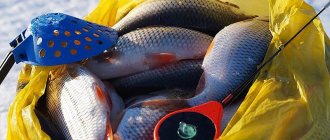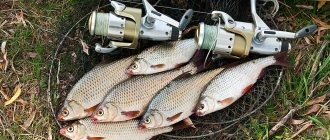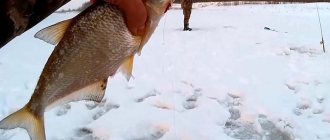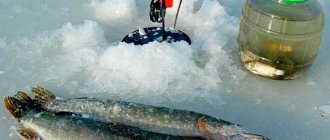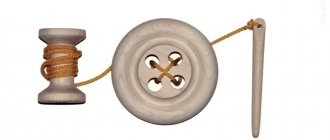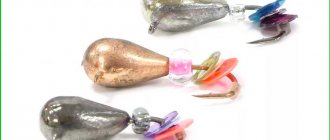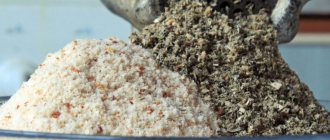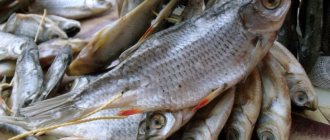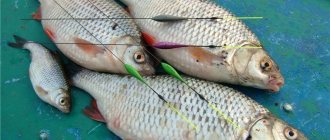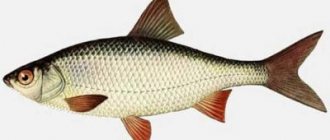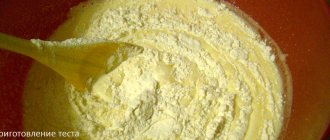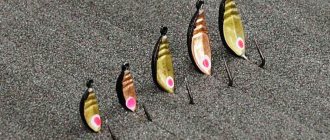Almost every fisherman knows that the most catchy places on reservoirs are areas with anomalies on the bottom. Among the latter are pits in which predators usually hide, waiting for the right moment to attack prey swimming nearby.
A hole is a pronounced depression at the bottom of a reservoir. Such anomalies exist on almost any river, lake, pond, reservoir - at least one. And all of them, without exception, are the most catchy places.
The latter is explained by the presence of relief changes in the pits, which are attractive to fish, as they allow them to hide in case of danger, to rest after spending a lot of energy, for example, on searching for food, and to wait out the winter period. If you can find a hole, you can most likely hope for a decent catch.
Pit structure
There are several sections in the river pit.
Predyamye
Plot of 2...3 m; located before the bottom begins to decline. The autumn bite there is not active, therefore, if you decide to fish here, you should not spend money on bait. It will still be carried away by the current and spread completely randomly and stupidly throughout the pit.
A decent fish in a hole, as a rule, does not react to such bait - it can only attract small things.
The place is interesting because small fish often come here, often followed by pike and, less often, fanged pike perch.
Dump (entrance) into the pit
The area is the most interesting in terms of fishing, because here in almost all the holes in the reservoirs a lot of fish and different species gather. It can have different steepness.
Steeper entrances are a favorite place for fish in the fall. Different fish on them are distributed along different horizons: for example, for large pike perch, catfish, bream, the lower, deepest part of the entrance is more comfortable; the upper part, almost at the very foot of the river, is inhabited by small pike perch, chub, ide, large roach, perch and pike.
The most catchy place on dumps is their middle; Only when the weather outside is unstable and there is prolonged cold, preference should be given to lower horizons of the site.
Often on dumps there are short, 1...1.5 m, flat areas called tables. They are always inhabited by large fish - usually a small school of bream or a single predator.
The pit itself
This area has the maximum depth. The fish bite is normal, similar to what happens in the foreland area, with the exception of bottom-dwelling fish, for example, catfish, which are best hunted in such a place.
If the bottom is flat and free from snags, fishing in a pit is unpromising (with the exception of a wintering pit, about which later. However, by the fall, white fish can gather in it in preparation for winter in large quantities. Therefore, if the predator’s bite is very bad, you can use a lightweight donk, successfully caught with underwear.
Snag holes for fishing are more interesting. Although in this case one would need to know the location of the writhing under water, which is difficult and sometimes costly to do due to the possible loss (and more than one) of gear.
At the bottom of some holes there may be irregularities, for example, banks, which are, in fact, underwater shallows. This type of hole is the most valuable for fishing, as it contains large fish and predators.
The beginning of the bank (downstream) is usually without fish. The best place for fishing is the end of the bank, or rather the drop - an area with a sharp increase in depth to the bottom of the hole. In such a place there is a high probability of catching trophy pike.
The sides of the cans also bring a catch, but, inexplicably, one of the sides always works better.
At the bottom of the pits there are sometimes small depressions that also look like pits. They are significantly inferior in catchability to banks. In autumn, sometimes there can be a lot of fish in them, especially white bream and silver bream.
Exit from the pit
An area where relief occurs. It is considered catchable, although in terms of fish activity it is inferior to the entrance to the pit. In addition, if it is steep, then fishing can turn into a complete strain on the nerves.
Post-pit
An area 20...40 m behind the pit (downstream); smooth. It is promising for fishing, especially from spring to early autumn. Usually good for asp and pike. If the weather is good in late autumn, you can also hope for a decent bite.
Pit shape
All pits are of two types:
- longitudinal - in plan they are similar to an ellipse elongated along the direction of the flow;
- rounded – close in outline to a circle; those of them with steep slopes at the edges are called whirlpools.
How to help fish in a pond survive the winter?
Many fishermen are directly involved in organizing wintering for fish. Especially when it comes to small ponds with stagnant water or homemade reservoirs stocked with fish on their own.
You can provide pond residents with a comfortable winter in the following ways:
- After the thickness of the ice on the water reaches several centimeters, drill a small hole in it. Using a pump, pump out a layer of water about 15 cm through the resulting hole. The oxygen that has entered the resulting space is enough for wintering fish.
- When the water begins to freeze, place tufts of straw on the surface, pointing up. Its tubular stems will provide oxygen access under the water when there is ice.
- Make several depressions in the bottom of the pond that will serve as wintering pits. The fish will be able to “lie down” in them to wait out the winter calmly.
Please note that the fish must go to winter healthy, without injuries or parasites. The pond should also be cleaned, without abundant thickets and food residues. All these shortcomings make wintering difficult.
Finding fishing holes
If you have an echo sounder and a boat, this process is not difficult. It is more difficult if such a device does not exist. In this case, you can find the hole visually or by examining the bottom.
The first method is effective with clean and clear water. Against the general background of the water surface, the pit stands out in a darker color. Moreover, there is a direct connection with the level of darkness of the water surface and the depth of the hole.
The second method is based on jig tapping the bottom. It is implemented like this:
- attach a drop weight to the line of the feeder rod and cast;
- wait until the sinker reaches the bottom;
- make 3...5 revolutions with the handle of the coil (specific amount);
- after stopping the rotation of the reel, measure the time (in seconds) that the sinker needs to sink to the bottom;
- Continue winding the fishing line several turns of the reel and at each stop, time the time the weight falls to the bottom.
On a flat area, the time it takes for the weight to fall to the bottom is constant, including at the bottom of the hole. At the entrance or exit to the pit it increases.
Wintering pit
The concept defines a place where a lot of fish accumulate during the winter. This is somewhat untrue:
- on rivers these are indeed holes, but not necessarily the deepest and not necessarily all those present in the watercourse; The main thing, it turns out, in such metas is not depth, but the presence of a slow circular flow; the latter guarantees the supply of oxygen to the water, and the deepening itself makes it possible to reduce energy consumption to resist the flow;
- on large lakes these are often smooth drops or small depressions in the bottom on an almost flat underwater plateau.
Today, the position of wintering pits is known in almost all reservoirs. According to the fishing rules, industrial fishing is prohibited in them from mid-October to mid-April. Recreational fishing in wintering pits is permitted.
Background: The term has existed since the 19th century. The ban on fishing in wintering pits in Russia was introduced in the last century, from the 50s.
Seasonal exit from pits
When spring comes, the release of fish depends on how warm the air is. For many fish, the appearance of melt water is a sign of warming, and it is already possible to leave the pit. Melt water differs in composition from river water. Flowing from the banks into the reservoir, it is saturated with nutrients from the soil and oxygen. The general awakening is also changing the behavior of fish. In the spring, the fish strives to intensively search for food in order to gain strength for spawning. In summer, she does not visit deep holes at all, because the main food lives in shallow water.
Therefore, wintering pits are a necessary “room” for fish for the winter.
Catching pike in a pit with live bait
This method of hunting pike in a hole is among the most effective, especially in those where there are significant differences in depth.
Tackle
They catch the predator almost vertically, using spinning rods that have the ability to catch quite large specimens. The reel can be used with any of the available reels, which can cast over 20 m and, naturally, have sufficient power for such fishing.
The fishing line used is monofilament, with a total length of 80...100 m, having a breaking load of 8 kg. 2...4 sliding olive weights are placed on it with a total weight of 7...10 g. The free end is equipped with a swivel, to which a leash with a single hook No. 8...No. 12 (according to domestic numbering) is attached.
The leash is used from monofilament measuring 0.5...0.7 mm. As follows from practice, a toothy fish rarely has time to bite it before it is fished out. There are certain requirements for the manufacture of a leash and for its use. They are as follows:
- the leash is made only (!) from new fishing line; previously used is not suitable;
- after an empty bite or fishing for a pike, the leash must be changed to a new one;
- After completing 5...6 casts, you should carefully inspect the leash and replace it at the slightest suspicion of a defect.
Fishing technique
The boat is anchored 5...10 m before the hole, approximately in its middle. A shorter distance applies to holes with a rather steep entrance, a greater distance if the slope is gentle or the water in the reservoir is clear. Live bait is cast to places of greatest depth. Wiring is carried out, trying to ensure the passage of live bait as close as possible to the direction of the current.
After installing the boat, make 1…3 casts without hooking any live bait. This is done to assess the snags or clutter of the dump and to accurately determine the load of the gear. The latter is kept as minimal as possible, which allows the bait to move more freely in the water column and is less traumatic for it when casting.
The live bait is hooked through the nostril. For bleak or roach, whose upper lip is weak, the lower lip is pierced and the hook is pulled out through the nostril. The latter option is less preferable, as it leads to the rapid death of live bait.
Tackle with live bait is thrown into the area directly from the pit. Allow the sinker and live bait to sink to the bottom. They wait for some time, after which they drag the bait to the base of the dump, then, if there are no bites, higher. And so on until the boat docks.
LiveInternetLiveInternet
That’s right – we won’t be able to catch it in the reeds. In winter, the water in reservoirs is clear, so the use of brightly colored spinners and catching perch in the winter with a reel in summer colors is not recommended. As a result, the fisherman will lose his equipment and ruin the trophy in vain.
The bottom of any river or small river has a complex topography, edges, rocky ridges, ledges, deep ravines and ditches under the bank, whirlpools, holes. It is easier to find wintering pits on the bends of the river; promising depths are also located near the elevated banks. A small company must comb the reservoir. If you go down the canal a little to the south, then in the Zaprudnya area there is another interesting section. And in conclusion, we present to your attention a video about the capture of this predator in the spring. Important characteristics of vibrotail are softness, elasticity, and the ability to maintain its properties in cold water (less than 10°C). The main thing is to know where, when and how. And in the winter season, this individual continues to move and feed.
The weight of the spinner for fishing on zherlitsy in winter in the Chelyabinsk region for pike perch is selected based on the depth and strength of the current at the fishing site. It is the most popular model from this manufacturer. In this article you will learn everything about winter fishing for crucian carp, and you will definitely not be left without a catch! We put silicone on the hook. True, this applies mostly to small and medium-sized predators. And if at this time you are nearby with well-chosen equipment, then the excitement, as they say, comes while fishing. How to choose a place to catch perch in spring, summer and autumn.
Good luck Remember that the fishing hole may stop working after the perch disappears or is caught. In our article we will talk about popular types of winter spinners and how to independently make a spinner for catching pike perch when in what weather in winter to fish. You can also successfully catch pike by fishing with a microbald in winter and in November . And when there is still a slight breeze, we have wonderful pike weather. When fishing in cloudy water, it is better to have a brighter lure, while in clear weather in clear water it is recommended that the bait be darker in color.
And as usual, the weather should be stable, without significant fluctuations. The supply of fishing line is approximately 10-15 meters. However, the handsome red-finned fish does not fish in pits, but on a gently sloping bottom, at depths from 1.5 to 6 meters. This fish does not gather in schools, but lives and feeds separately. At the same time, this same large perch does not disdain hunting small perch.
A fishing chair, a small plastic bucket for bait and a waterproof bag with a fish tank, bait table and sand head for landing net are required. That is why a powerful type of spinning rod with a fast action is needed. The exception is
only pike, which basically cuts it off.
The place has been chosen, patience is in abundance, the best jig is prepared. The optimal time for fishing will be when ice is installed, up to 15-20 cm thick, the fish will be active and quickly take the bait.
Catching pike in a hole with a jig
This is a method of spinning fishing that is most successful, interesting and difficult when catching toothy fish within the pits. In such places you can always count on meeting quite large specimens of pike.
Fishing places
The choice of places to fish in pits when hunting for pike depends on the size and characteristics of the underwater anomaly. On small rivers, where the pits themselves are quite conventional, the bottom of the pit is interesting. On larger bodies of water, you need to be interested in the edges, the slopes of the bottom that form the edges of the hole. It is all these characteristic points and areas that are the most promising in terms of parking for potential prey.
Pike do not like to be on steep slopes. Therefore, when jigging, you should concentrate on combing smoother slopes. To do this, you need to position yourself so that you can throw the bait over the opposite edge of the hole. Then the jig is led down the steps to the bottom of the pit.
If the latter is snaggy, it is worth casting and retrieving in close proximity to snags and sunken trees, where a predator may be hiding in ambush.
Tackle
For jigging in pits, powerful special jig spinning rods are used. Such rods are adapted to fight against possible snags and trophy fish. The reel can be used inertia-free or multiplier. The first is more powerful, in the range of sizes 2500...4000.
From fishing lines, you can use monofilament with a size of 0.30 mm, but it is better to give preference to braided cords, which are much stronger (with the appropriate sizes) and are more acceptable for jigging due to the sensitivity that is imparted to the entire tackle.
A leash in the tackle is required and preferably a metal one. The usual baits for jigging are silicone baits on a jig head or on a double or offset bait, hingedly connected to a “Cheburashka”.
If the bottom of the pit is snarled and heavily cluttered, it is best to mount the equipment using an offset hook. With a dead snag, preference should be given to the Texas rig, in which the sinker is made in the shape of a bullet. Its passability in such metas is higher, but even with it you cannot completely avoid snags and losses. A drop shot is best suited for fishing steep pit slopes.
Lures
In general, the choice of silicones is a rather delicate and individual matter. For fishing conditions in flat areas, where uniform wiring, uniform wiring with pauses, and stepped wiring (especially along the edges of the pit) are used, vibrating tails are more effective, although twisters also give good results. The size of the first ones in summer is 3...4 inches, in autumn a little more - 4...5 inches.
When guiding with a short step, which is most often used in snarled places, it is better to use passive rubber and the smallest possible load. This combination is characterized by a freer play of baits and reduces the number of hooks. The silicones that are suitable for this option are cancer, worm, slug or something similar. And all this, of course, is mounted on the offset press.
Fishing tactics
In summer, usually, the pit itself is rarely fished. They mainly concentrate on its surroundings - the upper boundaries, the most gentle edges. In the fall, you can jig deeper, in the very center of the holes.
Casts are made in a fan, trying to catch large areas. They experiment with wiring, using both uniform and stepped wiring without and with pauses, and combining them. We must not forget that the prey may often be at half-water. Therefore, wiring is done directly along the bottom, near it and in the water column.
What happens?
This term has been known for a long time. Following their path through the rivers, the sturgeon families - beluga and sturgeon - occupied deep holes - river beds for the winter, falling into semi-hibernation.
People were aware of the location of these pits. In winter, in these places, the deepest on the river, they made ice holes and pulled out sleepy fish with hooks. That’s when the name “red fish” came from – not from the color of its meat, but from its high value.

In addition, another fish such as bream also led people to think about the presence and inhabitants of the pits. This type of fish tends to gather in huge quantities in one place for the winter. And the massive catch of it using seines began in full swing. After such harvesting, the bream population in one reservoir declined sharply and recovered within several years.
However, when there was a threat of a decline in the sturgeon population, fishermen’s access to these pits became limited. It was necessary to create conditions for fish farming to exceed its catch.
Types of fishing in Russia
GPS navigator for fishing
Choosing a place for winter fishing. Where to drill holes?
In modern times, this concept has changed a little. Large numbers of fish gather in different places near the bottom, and not in deep holes.
Pisces do not just fall asleep in one position, as was previously thought, but make internal movements in different directions through the center. Moreover, even though the fish feed without much activity, schools from time to time leave their wintering places, where there is nothing left to feed on.
In especially deep lakes, their inhabitants avoid large holes at the very bottom, since a lot of carbon dioxide accumulates there. If reservoirs have strong currents, then the fish tries to get as far and deep as possible. And so he looks for quieter areas. The fact is that the fish during this period does not have much strength to resist the current. But although it should be weak, the water should not be stagnant. Lying flocks need oxygen, which is supplied by water.
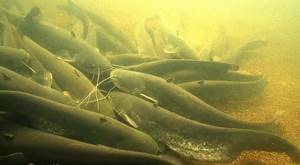
As you know, catfish do not live in schools. But in winter they form groups and hibernate. This is the seasonal time when the catfish's main food source, the frog, also enters suspended animation. But there is an opinion that catfish from northern latitudes experience digestive problems at low temperatures.
But catfish choose not just deep holes for wintering. They must have favorable conditions, such as running water and currents. In winter, these fish feed little. In addition to frogs, they hunt large fish such as carp. The situation begins to change when catfish and carp spend the winter in neighboring depressions and often compete for elite places. There are areas where these fish live together. There is no special peace here. There is a “hot” dispute for a place in the center of the pit. The decisive factor is the number of species. It happens that carp drive away catfish.
It is easier to catch carp in winter than catfish. From time to time he leaves the pit to look for mollusk larvae. At this moment, the fisherman may have the right moment. A carp that has left the pit in search of food and encounters bait can swallow it. Fishermen note that the ice hole must be of suitable size.
The sense organs of fish are better developed than those of humans. Compared to our five, fish have 12 senses. Therefore, they quickly notice the bait, and in addition, choose the right streams. All currents, changing, will be noticed by the fish. For them, the water column is not just a continuous medium, but a structured system. The fish is not just looking for deep or shallow places - it will prefer a shallow place, but with a strong current.
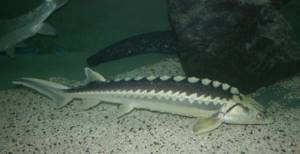
Experienced fishermen themselves are already beginning to understand these subtleties and understand how the fish will behave in a given place.
Catching pike perch in a pit
Where to look
You should look for pike perch in the pit in areas where there is a current and characteristic depth changes. And be sure to have a clean, non-silted bottom, without thickets. It will not be in places where the water stagnates and where it is shallow. The chances of finding it are where there are snags, sunken boats, stones - in such places the pike perch hides in ambush. Pike perch may be in the hole if the river has clean and clear water.
Fishing time
Twilight and the time before dawn are the most catchy. It is caught almost all year round, but each season has its own habits and habits.
The best period for biting pike perch is from the end of spring and in the first month of summer. Moreover, the greatest activity is observed after spawning, after 20...30 days. Afterwards the bite becomes noticeably weaker.
Spawning itself is “tied” to the water temperature and begins when it warms up to 18°C...20°C. At this time, he comes out of the pit to the upper part of the dump and the foreground, where he can be caught.
Pike perch loves changeable weather, especially the period when clouds change to sun. But after mid-years, the fanged one begins to fatten both during the day and in the morning. Although his exits are fleeting.
Usually, pike perch are fished by spinning, fishing the hole itself and the deepest parts of the entrance to it. From October onwards, you need to change tactics when hunting for pike perch. It’s worth starting to jig the pike perch when approaching the hole.
Fishing technique
The most successful way to catch pike perch in a hole is from a boat. They anchor either above the hole itself or next to it. On the edge the boat is turned across. You should not move suddenly, often move to other places, you should be aware of the shadow that you cast. You need to fish the entire pit and the surrounding slopes. In this case, the casts are made long distances, and the jig is always carried out along the bottom, most often using stepped wiring.
Tackle
When fishing from a boat, you need to take a short spinning rod with you - the jig type is perfect. The reel is powerful, but medium in size. It is better if it is soft, equipped with a brake, and works without jerking. Give preference to those models on which the fishing line is wound softly and smoothly.
It is better to use braided line as the main cord, which will provide clearer contact with the bait. The latter is preferable for pike perch in the form of live bait, silicone (vibrotail, twister), or foam rubber. The color is juicy and brighter. The dimensions are small (3...5 cm), the shape is narrow. You can try fishing with narrow spoons, small minnow-type wobblers.
Especially for lovitut.ru - V.A.N.
Tactics for catching roach in the middle of nowhere
The more capricious the fish bite, the more often it is necessary to use an integrated approach. If you don’t limit yourself to one specific equipment, then over time you can understand that any tackle will be your favorite if you can catch it.
These rigs add confidence, and your fishing technique becomes much better. Probably many have seen such a picture. Dozens of people are fishing on some reservoir in the morning and some are excellent at catching roach. They are mainly caught using float rigs.
A little later, from lunch, the fishermen slowly leave the reservoir. The bite is over or very small fish are caught. They are replaced by “devils” and successfully catch in the vacated holes. It turns out that the roach was in the feeding areas, but did not take the bait.
The lack of bite in floaters can occur due to the fact that the fish has risen into the water column. If a roach circles in this place, but does not bite, it still shows its presence. This could be weak bites or a feeling that someone just touched the tackle. Therefore, you just need to replace the equipment, for example, use a nod instead of a float.
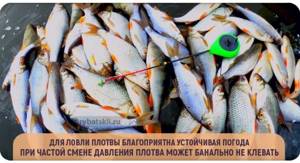
But you shouldn’t get carried away with regularly rewinding gear, it takes time. There may be a lot of roach, but they are not active. You can often see this picture when the weather changes. At the same time, the echo sounder shows a school of roach, but it bites poorly and only on some holes.
On the current
If there is a current on the river, then you should choose a float tackle. Practice has shown that it is better to tie two hooks: the first No. 4 on a leash 5–8 cm from the weight, and the second No. 2–3 12–14 cm from it.
Why two hooks? Fish, as a rule, bite from the bottom. Therefore, almost until mid-winter you can use one hook. But in the dead of winter, the roach looks for food and sometimes takes it even at high water. That is, at this time the second hook will not hurt.
